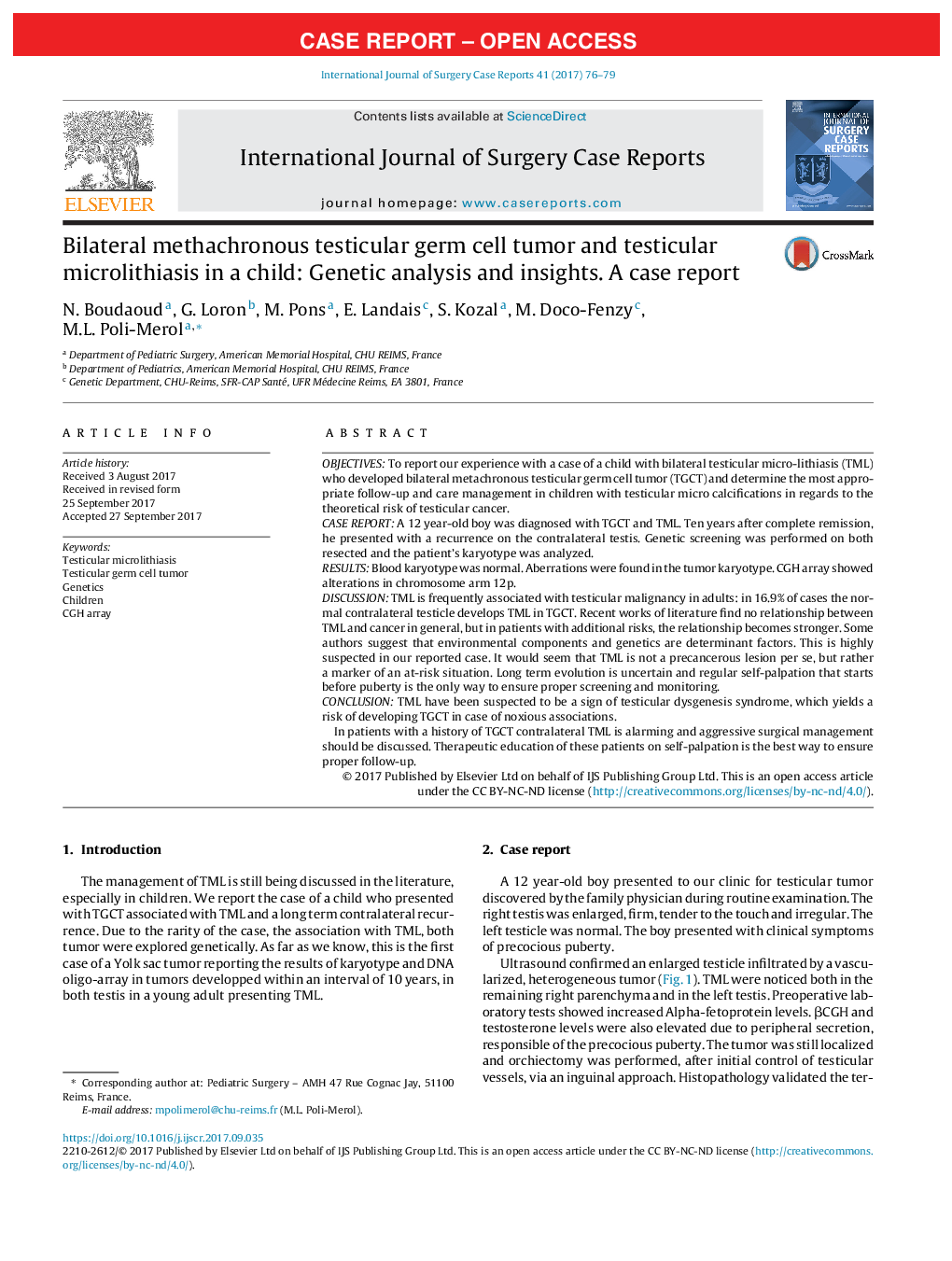| Article ID | Journal | Published Year | Pages | File Type |
|---|---|---|---|---|
| 5732467 | International Journal of Surgery Case Reports | 2017 | 4 Pages |
â¢Testicular microlithiasis in case of familial or personnal history of TGCT is higly « at risk ».â¢TML overlaps with TGCT susceptibility and this could be in some part genetically determined.â¢12p gain is the most consistent chromosomal abnormality in human testicular cell tumors.â¢The undisputable way to detect testicular tumor is repeated palpation.
ObjectivesTo report our experience with a case of a child with bilateral testicular micro-lithiasis (TML) who developed bilateral metachronous testicular germ cell tumor (TGCT) and determine the most appropriate follow-up and care management in children with testicular micro calcifications in regards to the theoretical risk of testicular cancer.Case reportA 12 year-old boy was diagnosed with TGCT and TML. Ten years after complete remission, he presented with a recurrence on the contralateral testis. Genetic screening was performed on both resected and the patient's karyotype was analyzed.ResultsBlood karyotype was normal. Aberrations were found in the tumor karyotype. CGH array showed alterations in chromosome arm 12p.DiscussionTML is frequently associated with testicular malignancy in adults: in 16.9% of cases the normal contralateral testicle develops TML in TGCT. Recent works of literature find no relationship between TML and cancer in general, but in patients with additional risks, the relationship becomes stronger. Some authors suggest that environmental components and genetics are determinant factors. This is highly suspected in our reported case. It would seem that TML is not a precancerous lesion per se, but rather a marker of an at-risk situation. Long term evolution is uncertain and regular self-palpation that starts before puberty is the only way to ensure proper screening and monitoring.ConclusionTML have been suspected to be a sign of testicular dysgenesis syndrome, which yields a risk of developing TGCT in case of noxious associations.In patients with a history of TGCT contralateral TML is alarming and aggressive surgical management should be discussed. Therapeutic education of these patients on self-palpation is the best way to ensure proper follow-up.
